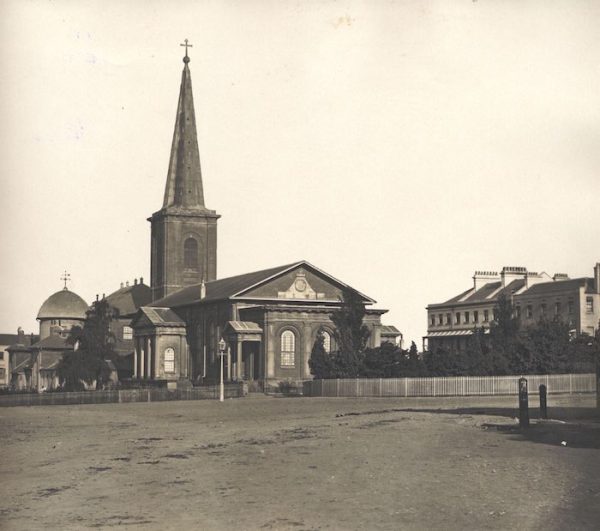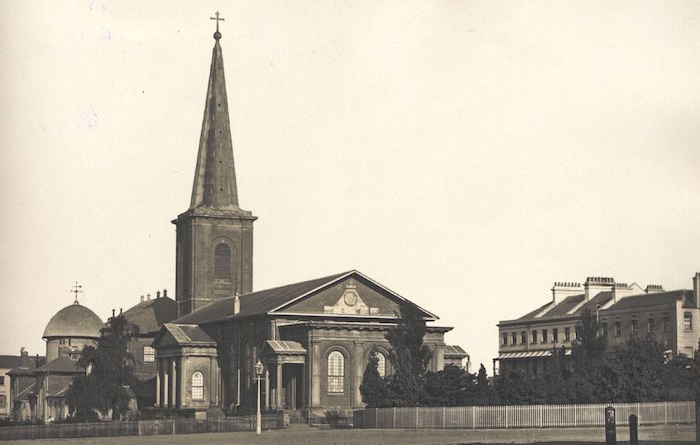Written by RAHS Volunteer, Elizabeth Heffernan
On the 7th of October 1819, builders under the guidance of convict architect Francis Greenway laid the foundation stone for what was intended to be Governor Lachlan Macquarie’s new courthouse on King Street. A far grander building was planned for George Street as Sydney’s new metropolitan cathedral – It was not to be.
Sent all the way to Sydney from London, Commissioner John Bigge questioned the expense of Macquarie’s proposed cathedral, and suggested a new church be built at the site of the already commenced courthouse instead. All Greenway had to do was add an “ecclesiastical air” to his plans. Five years later, in February 1824, the new St James’ Church was consecrated, and if it looked strangely secular one only had Bigge, and perhaps Macquarie’s budgeting skills, to blame.[1]

St James’ Church, King Street, Sydney, 1894 [RAHS Photograph Collection]
This year marks the bicentenary of the groundbreaking of St James’. Over its two-hundred-year existence, the little Georgian church has enjoyed just as much change and controversy as during its construction. The principal Anglican church in Sydney for fifty years, St James’ found itself at the centre of a scandal when newspaper editor and firebrand Edward Smith Hall was denied his pew close to the pulpit. Governor Ralph Darling confronted a potential assassin on the church’s front steps. The installation of the first Bishop of Australia, William Broughton, took place there in 1836.[2]
The twentieth century saw St James’ caught between the competing interests of the local parish and City of Sydney diocese, as its ministers embraced a more liberal style of worship known as Anglo-Catholicism.[3] Its architecture mimicked its tumultuous existence: the church underwent several periods of extension and restoration between the nineteenth and twentieth centuries, accommodating a growing congregation and changing attitudes towards its “gloomy” interior design.[4]
St James’ was heritage listed in 2004. It is the oldest church building in Sydney that has been in continuous use for its original purpose since its consecration.[5] Today, it sits within the historical precinct of Macquarie Street along with the Governor’s other building projects, by virtue of Bigge’s frugal hand. It can be said with utmost certainty that St James’ is more than a place of worship: it is a piece of Sydney’s history, as complex and enduring as the city itself.
References:
[1] Kenneth Cable, Peter Clarke, and Rosemary Annable, St James’ Church, Sydney: An illustrated history (Sydney: Churchwardens of St James’ Church, 1982), p. 5.
[2] K. J. Cable, ‘Saint James’ Church, King Street, Sydney, 1819-1894’, Royal Australian Historical Society Journal and Proceedings 50, pt. 4 (October 1964), p. 250; Cable, Clarke, and Annable, St James’ Church, pp. 19-21.
[3] Cable, Clarke, and Annable, St James’ Church, pp. 38, 41-2.
[4] Cable, Clarke, and Annable, St James’ Church, p. 34.
[5] ‘History and Architecture – St. James – King Street’, St. James – King Street, <https://www.sjks.org.au/church/history-and-architecture/>, accessed 24 September 2019.


0 Comments